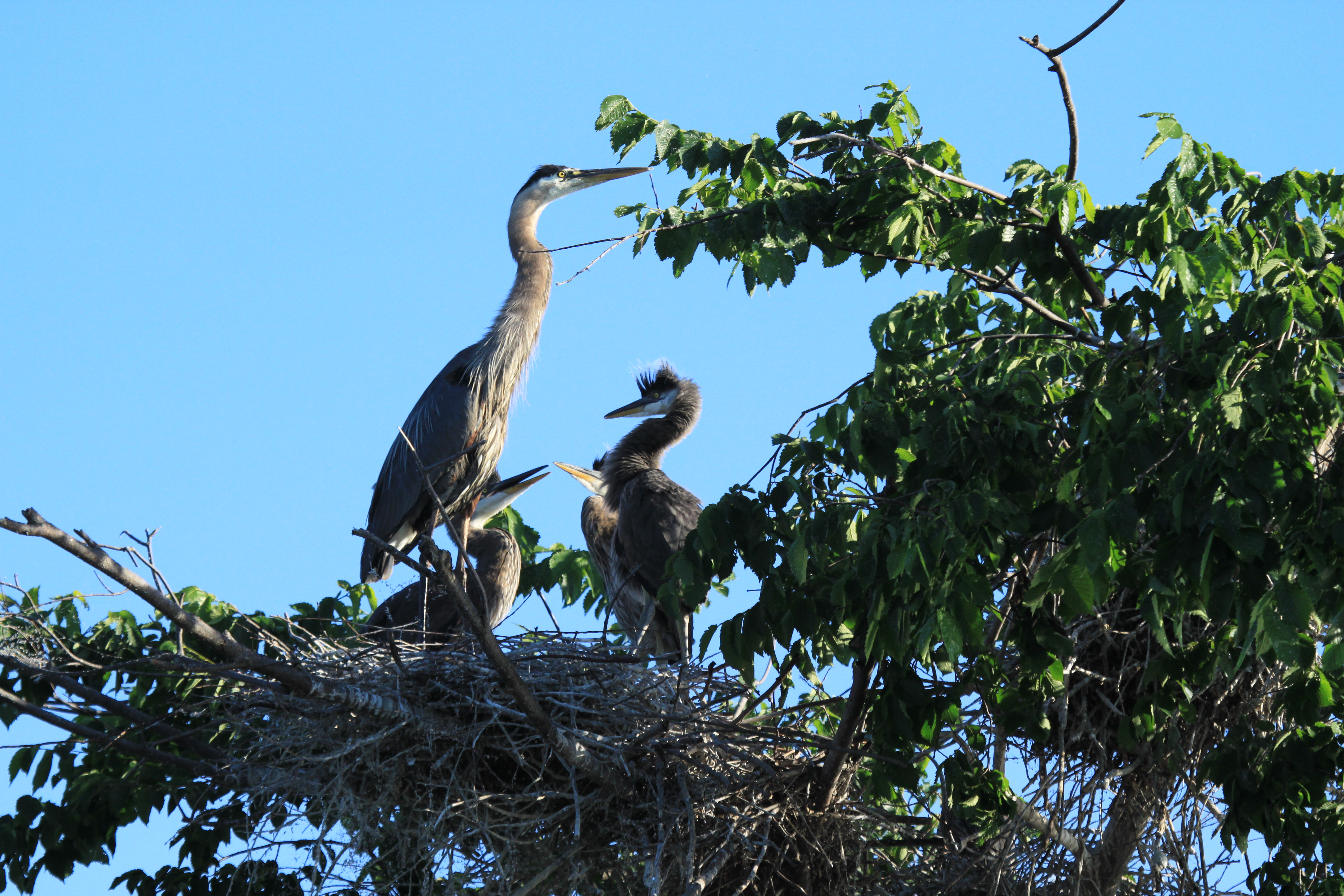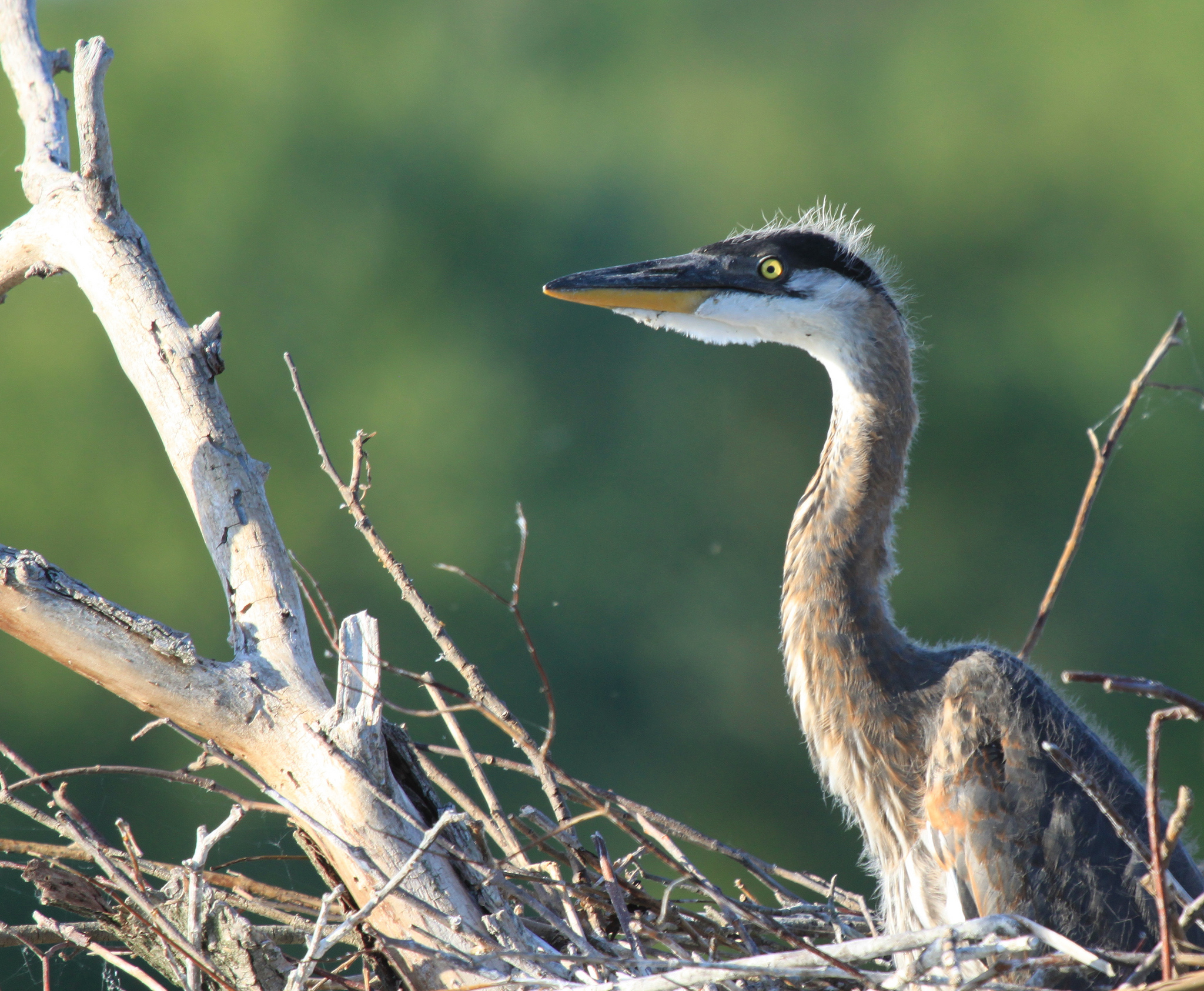Cute baby? Ugly baby? You decide…

Well hello there…

Move Over
Oh my…
Let me introduce you to one of our more photogenic baby birds in the area – Great Blue Herons.
We are lucky to have a nesting colony of Great Blue Herons (more specifically, a “heronry”) north of us on the Trent River system. There are about 15 nests up in trees on a very small island. The herons like to build there so they can avoid land based predators like racoons. The nests are mainly made of sticks, and are reused and added to each year. The male does most of the gathering of nesting material, and can also be seen presenting the female with sticks during a fancy courtship display. The female does the most of the nest building,

Apartment Style Living: 3 Nests in a Great Blue Heron Colony

Heronry
These photos were all taken from our canoe.

Pair of Great Blue Herons Embrace in Nest
Ah love! In late April and early May the Herons return to our area, pair up, and begin to build their stick nests. They exhibit amazing pair-bonding displays such as this happy couple, who intertwined their necks in various ways upon returning to their nest. A pair of herons will remain fairly faithful to each other during the breeding season, but will pair up with someone else the following year.
Herons lay between 2 – 6 eggs, and incubate them for about a month.

Great Blue Heron watches over baby
In our area, the chicks appear in mid to late May. They grow extremely quickly. Because the eggs are laid a few days apart, the older chick in the nest tends to be much larger, and begs for food quite aggressively.
Herons eat pretty much anything they can strike with their long sharp bill. They will stand motionless and then snap their S-shaped neck out quickly to spear fish, amphibians, rodents, insects, and other birds.
Both parents will feed the chicks at the nest by regurgitating down into their throats. Mmmmm.
By the time the juveniles are about 2 months old, they are ready to take their first flight, but will follow their parents around for another few weeks, and return to the nest site to be fed. They are looking more like their stately and graceful parents, and a bit less like something out of a Dr.Seuss book.
We have been watching this heronry for 3 years now. It is one of my absolute favourite spring activities to take the canoe out and see what’s happening there. The herons fly in and out with their huge wingspans and slow wingbeats, hunting and feeding their babies, greeting their mates, and performing bonding behaviours I can’t even begin to understand.
Here’s a link to the Cornell University “All About Birds” website. I use it all the time to help identify birds, and learn about them.
Cornell University All About Birds



 Feeding Time
Feeding Time




Ok, they’re cute!! I love the second shot down – total bedhead.
Such crazy looking little characters!
Leslie, we just rescued a young blue heron from a hawk but we don’t know where it’s nest is. He’s old enough to kind of fly and we let him recover on our property till he “walked” toward a mangrove and is now sitting there. How can we make sure he’s ok tonight?
Angela